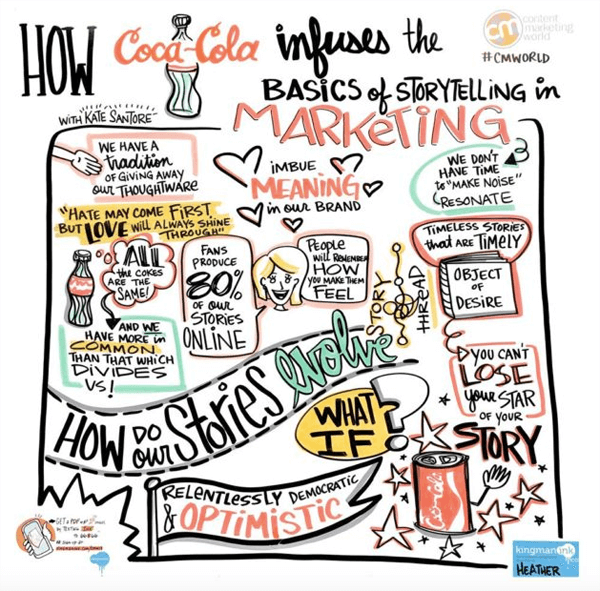The Power of Storytelling in Marketing
Storytelling is an ancient and powerful tool used by marketers for thousands of years to create a deep connection with their audiences.
By telling emotionally resonating stories, marketers can create powerful and lasting connections that inspire their audiences to take action.
In this article, we will explore the power of storytelling in marketing and how to craft a compelling brand narrative.
Key Takeaways (TLDR)
- Storytelling allows marketers to engage with their audience on a deeper level than traditional marketing methods.
- Storytelling taps into emotions and encourages trust and empathy.
- Crafting a compelling brand narrative helps differentiate your brand from the competition.
- To create a compelling narrative, marketers must identify their core values, know their audience, and tell a story with emotion.
- Consistency in messaging is key for reinforcing your brand identity.
Why Storytelling Matters
Marketing is all about developing a powerful connection with your audience, and one of the most effective ways to do that is through storytelling.
Storytelling has been around for thousands of years and is deeply rooted in human nature, allowing us to engage with our audience on a deeper level.
By using storytelling in your marketing, you can create a compelling brand narrative that resonates with your audience and encourages them to take action.

How to Create Compelling Brand Narratives Through The Power of Storytelling in Marketing
In this article, we’ll explore the power of storytelling in marketing and how you can create a compelling brand narrative.
First, let’s look at why storytelling works in marketing. At its core, storytelling is about creating a connection. When you tell a story, you’re sharing something personal, relatable, and memorable.
By doing this, you can engage with your audience on a deeper level than you would with traditional marketing methods.
The power of storytelling lies in its ability to tap into our emotions. When we hear a story, our brain releases oxytocin, a hormone associated with feelings of trust and empathy.
This makes us more receptive to messages being conveyed and more likely to take action as a result.
Some of the most successful brand stories connect with emotions shared by most people.
They are stories that have been repeated since the beginning of civilization and still exist today. Some examples of these narratives are underdog stories, fate and destiny stories, true love stories, and so many more.
Nike’s brand narrative, which still revolves around the slogan “Just Do It,” builds on the concept of overcoming fears, conquering challenges, and pushing ourselves beyond our limits.
However, Nike didn’t just make this up; their history is chock-full of stories like this, from its own humble beginnings to the stories of the hundreds of athletes they have supported over the years.
In addition to building trust and empathy, storytelling is also a powerful tool for creating brand recognition.
A compelling brand narrative can help differentiate your brand from the competition and create a unique identity that resonates with your audience.
So now let’s talk about how to create a compelling brand narrative. Creating a compelling brand narrative is about finding the right story to tell. Here are some tips to help you get started.
5 Steps To Crafting Your Brand Story
Step 1: Identify your core values.
Your brand narrative should reflect your core values and what your brand stands for.
Start by identifying what makes your brand unique and what differentiates it from the competition.
- What are your brand’s core values?
- What is your brand’s mission?
- What are the brand’s strengths and weaknesses?
By understanding these key elements, you can begin to shape your brand narrative.
Step 2: Know your audience.
To create a compelling narrative, you need to understand your audience. Who are they? What are their needs and desires? What are their pain points?
By knowing your audience, you can create a narrative that speaks directly to them and addresses their needs.
Step 3: Tell a story.
Once you’ve identified the core values of your audience, it’s time to start crafting your brand narrative.
Start by telling a story that is relatable and engaging.
This could be a personal story about how the brand got started, a story about a customer who had a transformative experience with your product or services, or a story about how your brand is making a positive impact in the world.
Step 4: Make it emotional.
To truly connect with your audience, your brand narrative needs to be emotional.
This means tapping into your audience’s hopes and fears, dreams and desires, and using vivid language and imagery to create a sensory experience that resonates with your audience on a deep level.
Step 5: Be consistent.
Once you’ve created a brand narrative, it’s important to be consistent in your messaging.
Make sure that your narrative reflects in all of your marketing materials, from your website and social media profiles to your products, packaging, and advertising.
This will help to reinforce your brand identity and make your narrative more memorable.
In Summary
Storytelling is a powerful tool for creating a compelling brand narrative that resonates with your audience.
By identifying your core values, knowing your audience, telling a story, making it emotional, and being consistent, you can create a narrative that sets your brand apart and inspires your audience to take action.
So don’t be afraid to get creative and tell your story. That’s how you’ll capture the hearts and minds of your audience.
Storytelling allows you to get to the core of why people should care about your brand and allows you to create a powerful and lasting connection.
It is an invaluable tool for developing a successful marketing strategy and creating a more meaningful connection with your audience.
When done correctly, storytelling can have a dramatic impact on your business. It helps you to create brand recognition and establish trust and empathy with your audience.
It also helps to differentiate your brand from the competition and makes your narrative more memorable.
By crafting a compelling story and delivering it emotionally, you can create an engaging and powerful brand experience that resonates with your audience and encourages them to take action. Storytelling is a powerful tool that all marketers should employ.
You can create an engaging and memorable experience for your audience. So don’t be afraid to get creative and tell your story. That’s how you’ll capture the hearts and minds of your audience.
Frequently Asked Questions
What are the four elements of brand storytelling?
The four elements of brand storytelling are character, setting, conflict, and resolution. These components weave a narrative that connects the brand to its audience emotionally.
How do you create a brand storytelling?
To create brand storytelling, start by understanding your brand’s core values, identify the key audience, craft a compelling narrative around your brand’s journey or purpose, and present it in a relatable and authentic manner.
How do brands use storytelling?
Brands use storytelling to foster emotional connections, differentiate themselves from competitors, and convey their values and purpose in a way that resonates with their target audience.
What is brand storytelling content?
Brand storytelling content is any material—be it written, visual, or auditory—that narrates a brand’s story, emphasizing its mission, vision, values, and the experiences it offers to its customers.






